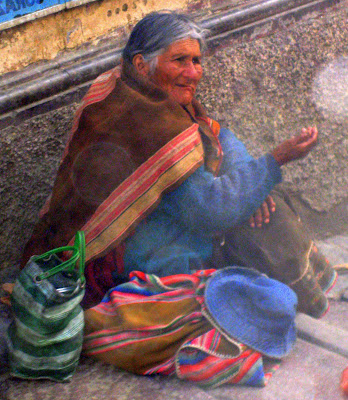



We went out a few times and had our meals in a street dining restaurants. While eating you get approached by people trying to sell you stuff. We have been looking for hammocks for a while and one night we were approached by a bloke selling hammocks for about $7. He was a nice bloke so we ended buying two for $10. Later he came back and showed us his deluxe model, which was more like solid material than stringy like the ones we already had. So we reluctantly bought a third hammock. I offered to buy him a beer and he sat with us for a while. He said that he made the hammocks himself and it was his only job. Later in the night another bloke came along selling hammocks only these were much stronger looking than the stringy ones we had purchased. We ended up buying one of these as well, so that now meant we now had four hammocks. Next thing the first bloke came back and offered us one of the stronger hammocks. We told him that five hammocks would really be overdoing it but he persisted. Finally I made a deal with him to swap his deluxe model with one of the stronger stringy ones. So in the end we went came home with four hammocks, more than enough. It is so hard to say no to people sometimes.

After Granada we headed to an large island in Lake Nicaragua called Ometepe. Ometepe is big enough to support a population of 40 000 people and has two volcanoes on it, one of them is active. Even though there are so many people living there it still feels pretty rural and small, so the island is pretty big. That puts the size of the lake into some perspective.

When we arrived at the wharf where the ferries were, it appeared that we would have to wait for a few hours for the next boat, or chance taking an old wooden hulk across the lake to the island. With all our luggage and the heat it wasn't worth waiting so we got on the old boat. That was a bit of an experience. As the boat lurched through the waves water was coming inside and splashing up on our legs. Kim and Mikayla were not that impressed.
When we arrived at the island we were hounded by people wanting us to get a taxi and we kept telling them that we were OK, but one of these people persisted and kept following us and talking to us. He turned out to be a self-employed tourist operator and was really helpful. We had to use his phone to contact our accommodation that somehow had lost our booking, so our new friend recommended another place which was really good, drove us there, carried our bags and was really nice to us. I thought at first that this might have been a scam of some sort, but it turns out his only hidden agenda was that he did tours for $50 US so we took him up on it the next day. The tour itself was pretty average, visiting a pretty dodgy museum, a swimming pool built into a river and a restaurant on a beach. We drove around in his old, beaten up 4 wd over some really rough roads, but still, it was an interesting experience.
After 3 days we headed back to the 'mainland'. I went back to Granada and Kim and Mikayla went to San Juan del Sur. In Granada I managed to go on one of those horse-driven coach tours and took a few photos.

Nicaragua has had some issues with political instability, and these continue today. Possibly you might remember hearing of the Sandanistas and the Contra Rebels from news stories back in the 1980s. Even while were we here there were massive protests in Managua the capital city (we weren't there). The protests are basically the about the old communist-capitalist debate, where both sides hold very strong views. There was a civil war in Nicaragua over these issues in the 1980s and many people died defending these views. Today, other than the protests and some graffiti, there aren't any obvious signs of this conflict and Nicaragua feels like a safe place, if not, a tropical paradise.












































